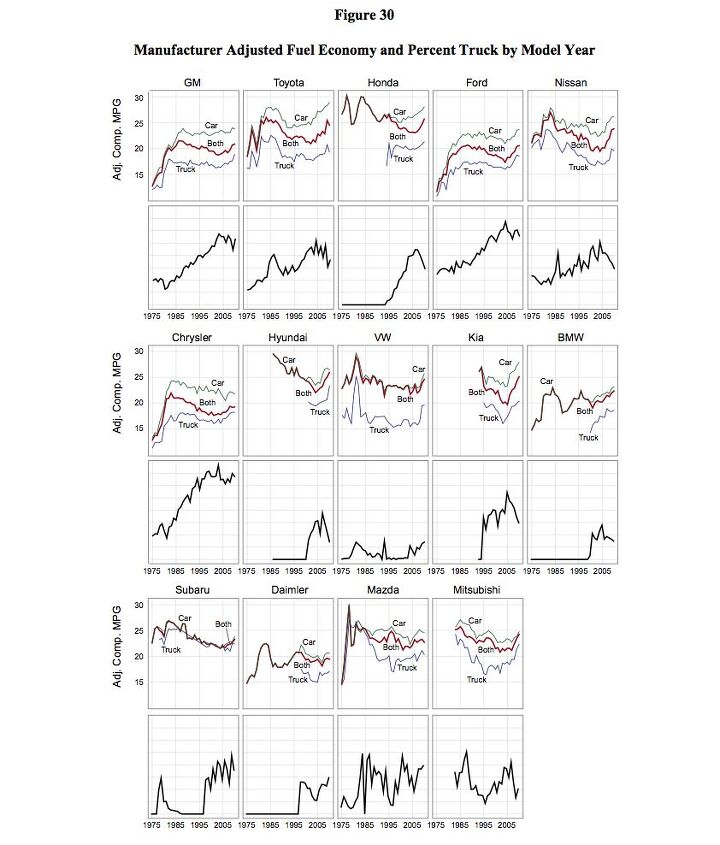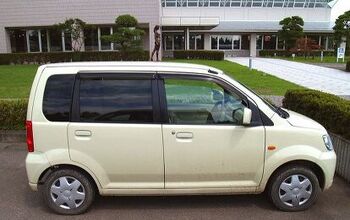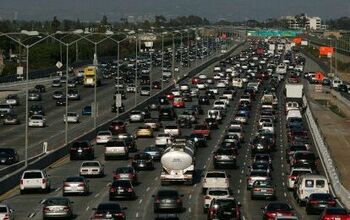Government Investigates The Downsides Of High Fuel Economy Standards
In a supplemental memo related to forthcoming fuel economy standards for the years after 2017 [full doc in PDF here], the EPA has revealed the results of its consultations with stakeholders including the auto industry, and it seems that there are tradeoffs to high standards. The industry’s complaint seems to be that the government has underestimated the impact of higher fuel economy standards on such details as
vehicle performance, utility (e.g., towing capability), and comfort (e.g., noise, vibration, and harshness), the role of competing regulatory or technical requirements (e.g., criteria pollutant and/or safety standards), and assumptions regarding future gasoline fuel properties (e.g., octane levels).
All of which comes with a real price. The government is targeting a 2-6 percent increase in fuel economy standards between 2017 and 2025, which amounts to a range of 47-62 MPG. The NHTSA/EPA estimates show that this level of increase will cost automakers between $770 and $3,500 per vehicle to meet, but automakers insist that these estimates are too low. And apparently, the government takes these concerns seriously enough to blow its end-of-November deadline for narrowing the range of possible standards. At the top of the list of issues for study: the age-old trade-off between efficiency and safety.
The memo notes
NHTSA and EPA will conduct an analysis of the effects of the proposed standards on vehicle safety, including societal effects. CARB is undertaking and coordinating with EPA and NHTSA on a study of how a future vehicle design that incorporates high levels of mass reduction complies with vehicle safety standards and voluntary safety guidelines. NHTSA is also initiating a new study of the feasible amount of mass reduction based on a mid-size passenger car platform, and the effects of several advanced mass reduction design concepts on fleet safety. The NHTSA studies are being coordinated with EPA, DOE, and CARB.
This is a battle TTAC has longed to see for some time: the efficiency-first crusaders championing mass-reduction versus the safety-first crusaders championing the rolling bunker mentality. Both sides are equally self-righteous about their pet causes, and forcing the two to come to a compromise will be an important step. But the issue of cost will be one of the toughest points of contention in the whole post-2017 CAFE debate. Will the government be harassed into more giveaways to help automakers reach impossibly high standards, will consumer incentives help the CAFE medicine go down, will standards be moderated, or will the EPA and NHTSA simply defer to a proposed gas tax hike to take care of emissions? Either way, someone will have to pay t he high price of fuel efficiency.
More by Edward Niedermeyer
Latest Car Reviews
Read moreLatest Product Reviews
Read moreRecent Comments
- MaintenanceCosts Poorly packaged, oddly proportioned small CUV with an unrefined hybrid powertrain and a luxury-market price? Who wouldn't want it?
- MaintenanceCosts Who knows whether it rides or handles acceptably or whether it chews up a set of tires in 5000 miles, but we definitely know it has a "mature stance."Sounds like JUST the kind of previous owner you'd want…
- 28-Cars-Later Nissan will be very fortunate to not be in the Japanese equivalent of Chapter 11 reorganization over the next 36 months, "getting rolling" is a luxury (also, I see what you did there).
- MaintenanceCosts RAM! RAM! RAM! ...... the child in the crosswalk that you can't see over the hood of this factory-lifted beast.
- 3-On-The-Tree Yes all the Older Land Cruiser’s and samurai’s have gone up here as well. I’ve taken both vehicle ps on some pretty rough roads exploring old mine shafts etc. I bought mine right before I deployed back in 08 and got it for $4000 and also bought another that is non running for parts, got a complete engine, drive train. The mice love it unfortunately.


































Comments
Join the conversation
Most people's tiny minds can't get their head around the fact that wasting energy and killing each other on the roads is a HUGE cost to a nation. In the USofA it's a particularly difficult problem because pure selfishness (dressed up as "liberty") is reversing the gains made in decades past to create a middle-class. A little more macro thinking needs to be explained to the micro-minded. Otherwise, China wins (it has already, but hey...)
And projecting geeber's logic would show that we'd be safer blasting around at 120mph in bus-sized cars. Taken the other way, being a pedestrian is obviously extremely unsafe. Tiny minds are always trying to repeal the laws of physics.